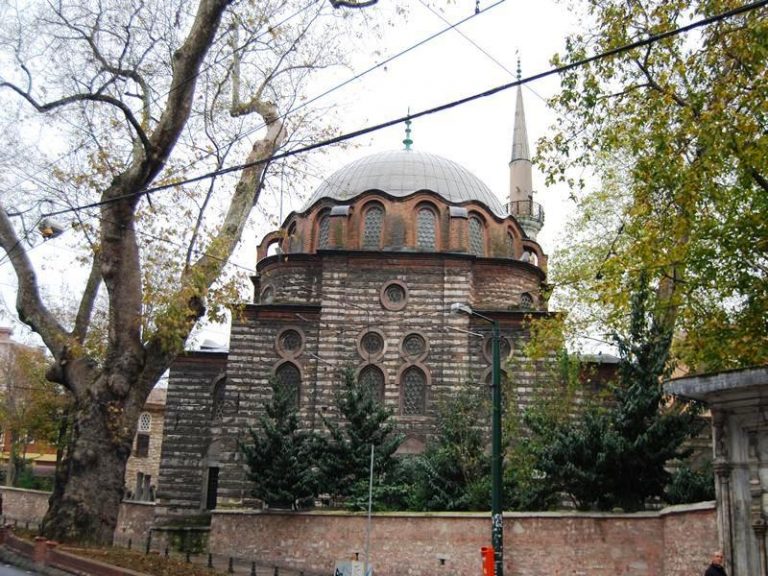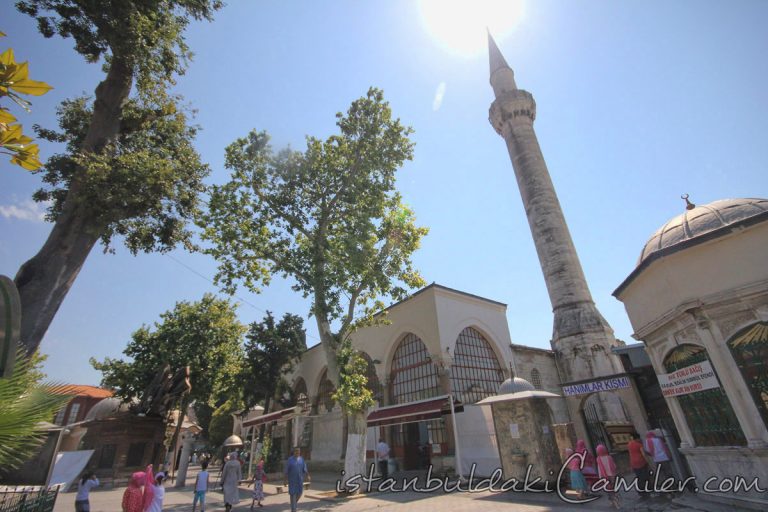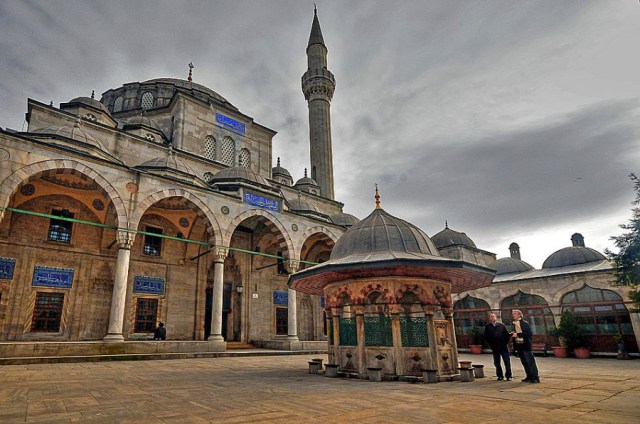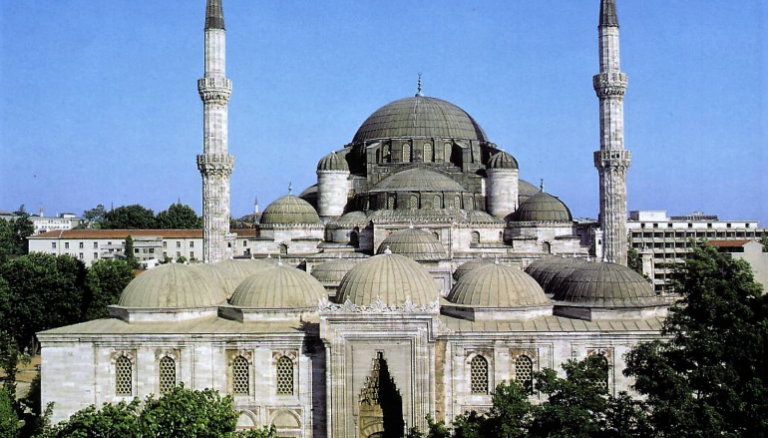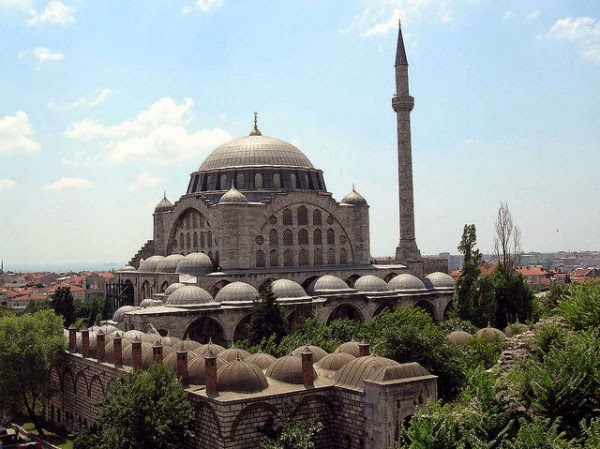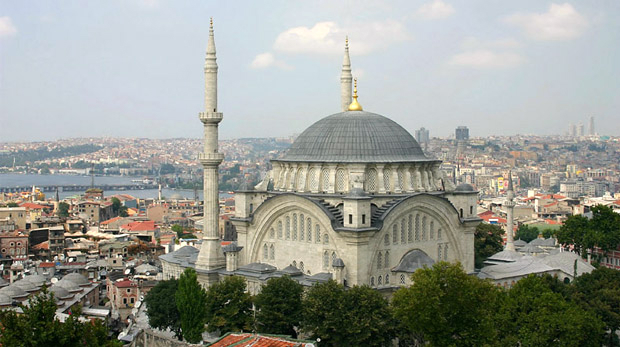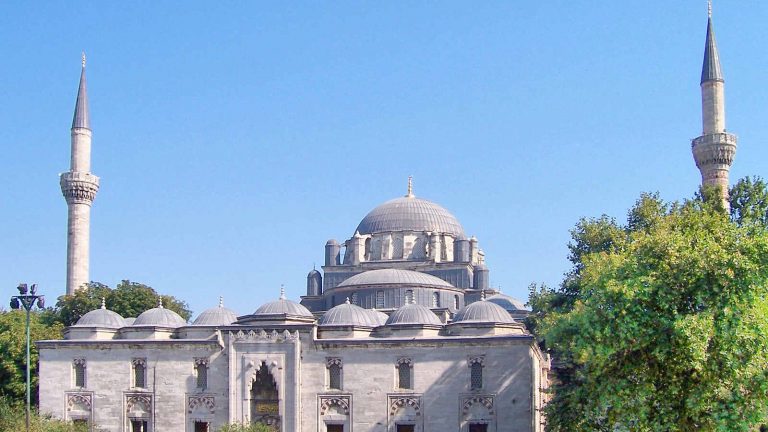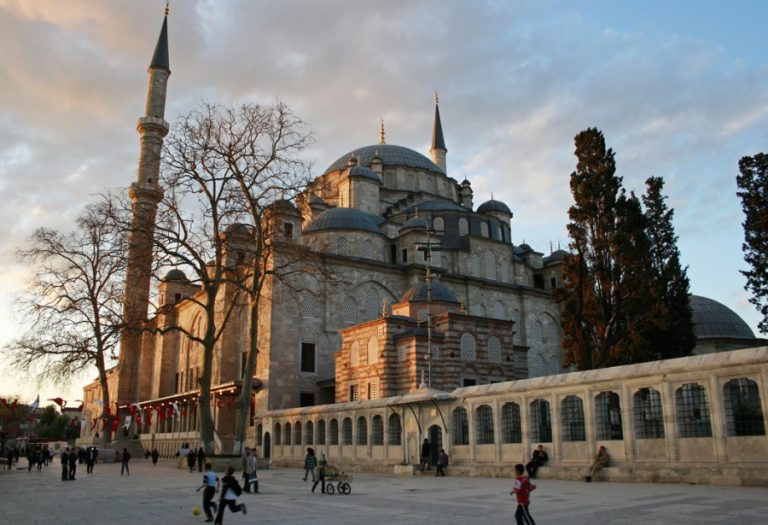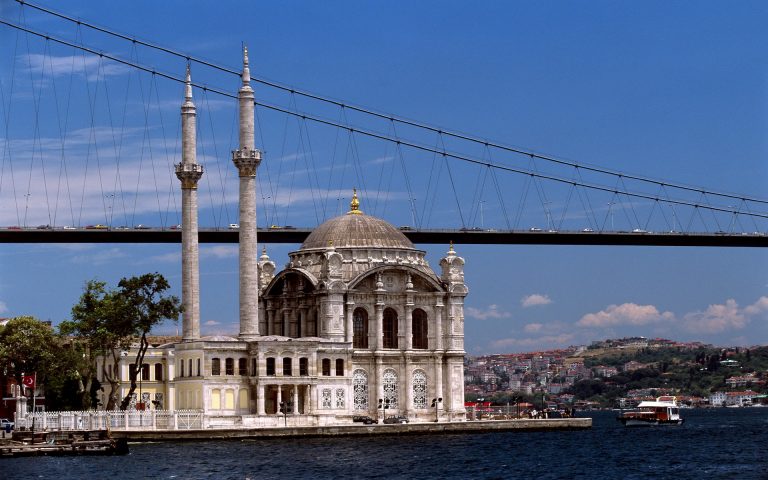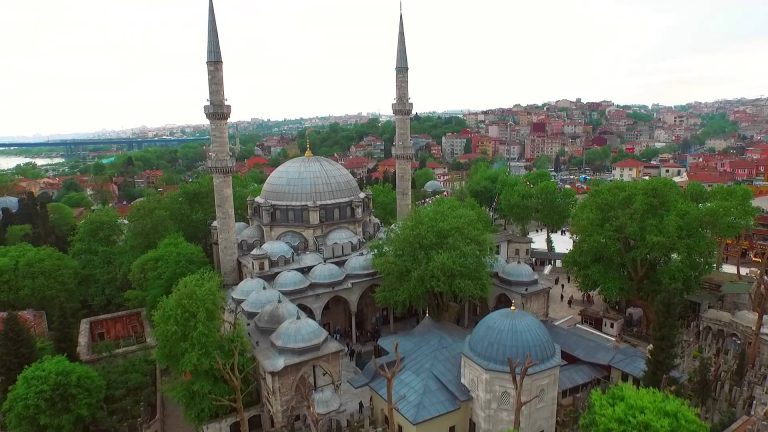Mihrimah Sultan Mosque, in Istanbul
Mihrimah Sultan Mosque, In Istanbul there are two mosques dedicated to Mihrimah Sultan, most belowed daughter of Süleyman the Magnificent and his wife Hürrem (Roxellana), and also the wife of the Grand vizier Rüstem Pasha. One of these mosques is located at Edirnekapi neighborhood next the old city walls on the European side of the city, and the other one at Üsküdar district on the Asian shores.
Mosque at Edirnekapi
Mihrimah Sultan mosque is located on Fevzi Pasa Street at Edirnekapi neighborhood by the ancient city walls, near the Chora church museum. The location is also one of the seven hills of the ancient Byzantium where there was an old Byzantine monastery originaly. The mosque was built between 1562-1565 by the architect Sinan with the order of Süleyman the Magnificent. It was badly damaged during an earthquake by the end of 19th century and was restored in the beginning of 20th century. The complex is formed by a mosque, a madrassa, a primary school, Turkish bath, and a shrine (türbe in Turkish).
The mosque has a square plan standing on a high platform. The dome is 37 meters high from the ground and its diameter is about 20 meters. It has a single dome and a single minaret. There are 161 windows so inside gets always enough light. Wooden window shutters and doors are inlaid with mother of pearl and ivory. The pulpit (Minber) and the niche (Mihrab) are made of stone and are the finest examples of the period. Although the interior decoration of the mosque is simple but great, many of them were re-made during the restorations under the reign of sultan Abdülhamit.
The courtyard is accessible from the street by steep steps where on the right hand side there is a madrassa at two corners of the inner courtyard. Unusually, these madrassas have no classroom sections therefore there was a separate school. The primary school and the tomb (türbe) of Güzelce Ahmed Pasha are found in the right hand corner of the mosque’s kiblah. There is also a Turkish bath in the same area next to the street. The fountain for the ablutions (Sadirvan in Turkish) stands in the inner courtyard, but nothing remains of the market today.
Mosque at Usküdar
Mihrimah Sultan mosque is located in Üsküdar Square just across the local ferry pier near Marmaray construction site. It was also built by the architect Sinan with the order of sultan Süleyman between 1547-1548. The complex was formed of a mosque with two minarets, a madrassa, tomb (türbe in Turkish), primary school, caravanserai, soup kitchen, and a small hospital, but only some of these buildings have survived until our day.
The madrassa is located to the north of the mosque but it doesn’t bear its original function today; it’s used as a small health center. Mihrimah’s two sons and the Grand Vizier Ibrahim Ethem Pasha are buried in the tombs (türbe) between the mosque and the madrassa. The primary school is located on the kiblah side of the mosque. The hospice, soup kitchen and caravanserai have not survived.
A fine fountain for the ablutions (Sadirvan) stands in the courtyard. When you enter the mosque, there is a single dome. The window shutters have inlay decorations. The pulpit (Minber) and the niche (Mihrab) are made of marble with fine ornaments.
The mosque was completely restored in 2013 and re-opened to public in 2014.
Hope to see you soon in Istanbul.
